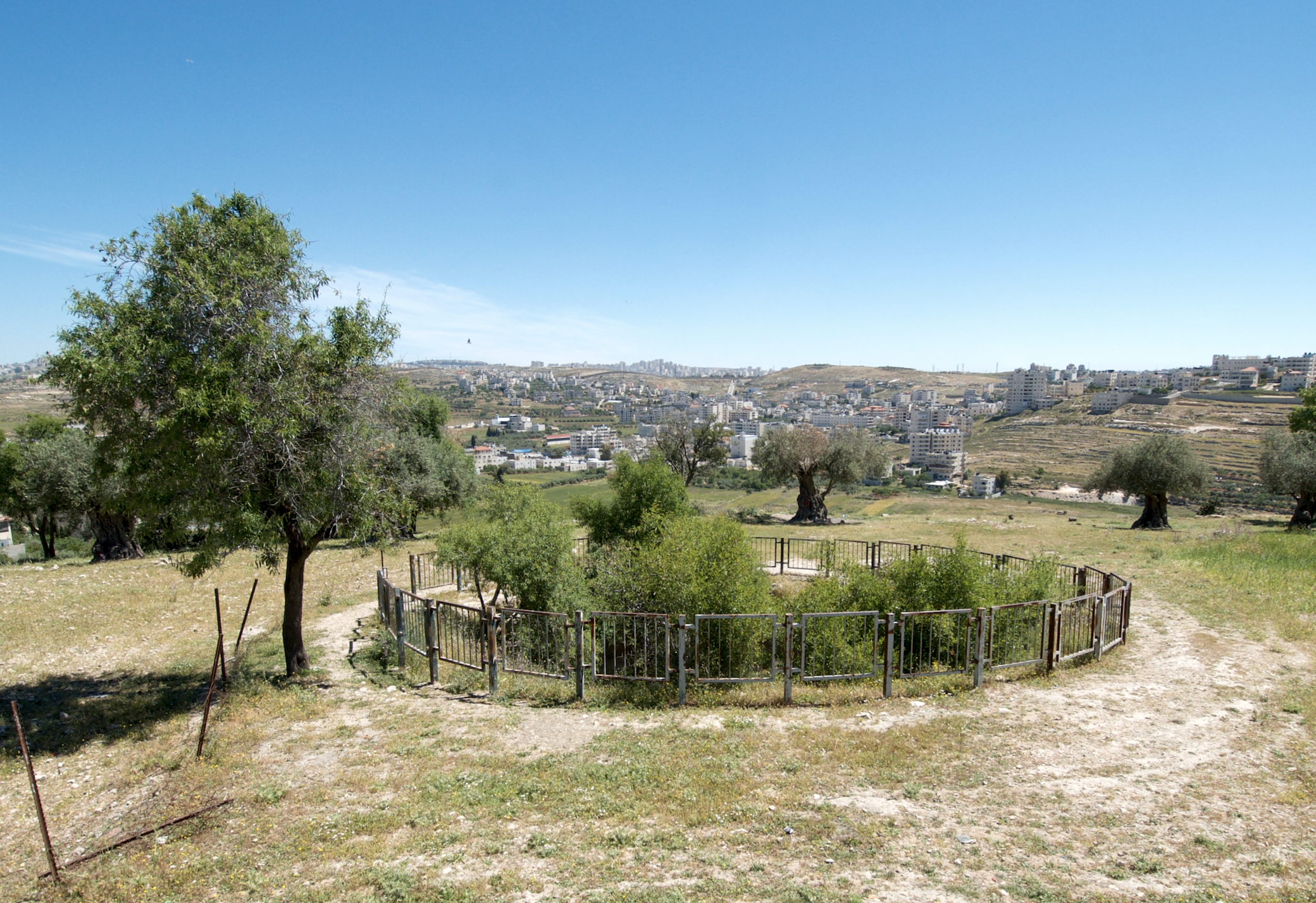|
Rephaim Valley
The Valley of Rephaim (, ''Emeq Rephaim'') (; , R.V.) is a valley descending southwest from Jerusalem to Nahal Sorek below. It is an ancient route from the coastal plain to the Judean Hills, probably named after the legendary race of giants. Emek Refaim (), the German Colony in Jerusalem, takes its name from this valley. Biblical narrative When David became king over all Israel, the Philistines, judging that he would now become their uncompromising enemy, made a sudden attack upon Hebron, compelling David to retire from it. He sought refuge in "the hold" at Adullam (), and the Philistines took up their position in (or raided) the valley of Rephaim, on the west and south-west of Jerusalem. Thus all communication between Bethlehem and Jerusalem was intercepted. While David and his army were encamped here, there occurred the battle narrated in and . Having obtained divine direction, David led his army against the Philistines, and gained a complete victory over them. The scene of th ... [...More Info...] [...Related Items...] OR: [Wikipedia] [Google] [Baidu] |
Bethlehem
Bethlehem is a city in the West Bank, Palestine, located about south of Jerusalem, and the capital of the Bethlehem Governorate. It had a population of people, as of . The city's economy is strongly linked to Tourism in the State of Palestine, tourism, especially during the Christmas period, when Christians embark on a pilgrimage to the Church of the Nativity, which is revered as the location of the birth of Jesus. A possible first mention of Bethlehem is in the Amarna letters, Amarna correspondence of ancient Egypt, dated to 1350–1330 BCE, although that reading is uncertain. In the Hebrew Bible, the period of the Israelites is described; it identifies Bethlehem as the birthplace of David. In the New Testament, the city is identified as the birthplace of Jesus, Jesus of Nazareth. Under the Roman Empire, the city of Bethlehem was destroyed by Hadrian, but later rebuilt by Constantine the Great, who commissioned the Church of the Nativity in 327 CE. In 529, the Church of the ... [...More Info...] [...Related Items...] OR: [Wikipedia] [Google] [Baidu] |
Al-Walaja
Al-Walaja () is a Palestinian village in the West Bank, in the Bethlehem Governorate of the State of Palestine, four kilometers northwest of Bethlehem. It is an enclave in the Seam Zone, near the Green Line. Al-Walaja is partly under the jurisdiction of the Bethlehem Governorate and partly of the Jerusalem Municipality. According to the Palestinian Central Bureau of Statistics, the village had a population of 2,671 in 2017. It has been called 'the most beautiful village in Palestine'. Al-Walaja was depopulated during the 1948 Arab-Israeli War, in October 1948. It lost about 70% of its land, west of the Green Line. After the war, the displaced inhabitants resettled on the remaining land in the West Bank. After its occupation by Israel during the Six-Day War, Israel annexed about half of al-Walaja's remaining land, including the neighborhood Ain Jawaizeh, to the Jerusalem Municipality. Large parts of the land were confiscated for the construction of the Israeli West Bank b ... [...More Info...] [...Related Items...] OR: [Wikipedia] [Google] [Baidu] |
Jaffa–Jerusalem Railway
The Jaffa–Jerusalem railway (also J & J) is a railway that connected Jaffa and Jerusalem. The line was built in the Mutasarrifate of Jerusalem (Ottoman Syria) by the French company ''Société du Chemin de Fer Ottoman de Jaffa à Jérusalem et Prolongements'' and inaugurated in 1892. The project was headed by Joseph Navon, an Ottoman Jewish entrepreneur from Jerusalem, after previous attempts by the British-Jewish philanthropist Sir Moses Montefiore failed. It is the second railway inaugurated in the Middle East after the İzmir–Aydın Railway, which opened in 1856. The railway was originally built in , later rebuilt to and then to . The line was operated by the French, the Ottomans and after World War I, the British. After its closure in 1948, it was re-opened by Israel Railways in 1949 as the Tel Aviv – Jerusalem railway, although since 2019 this designation is instead used to refer to the Tel Aviv–Jerusalem railway – an electrified dual-track railway line c ... [...More Info...] [...Related Items...] OR: [Wikipedia] [Google] [Baidu] |
Gezer
Gezer, or Tel Gezer (), in – Tell Jezar or Tell el-Jezari is an archaeological site in the foothills of the Judaean Mountains at the border of the Shfela region roughly midway between Jerusalem and Tel Aviv. It is now an List of national parks and nature reserves of Israel, Israeli national park. In the Hebrew Bible, Gezer is associated with Joshua and Solomon. The archaeological site of Tel Gezer rises to an elevation of above sea-level, and affords a commanding prospect of the plains to the west, north and east. Gezer became a major fortified Canaanite city-state in the first half of the 2nd millennium BCE. It was later destroyed by fire and rebuilt. It is first mentioned in several Ancient Egypt, ancient Egyptian inscriptions. Its importance was due in part to the strategic position it held at the crossroads of the Via Maris, ancient coastal trade route linking Egypt with Syria, Anatolia and Mesopotamia, and the road to Jerusalem and Jericho, both important trade routes. I ... [...More Info...] [...Related Items...] OR: [Wikipedia] [Google] [Baidu] |
Gibeon (ancient City)
Gibeon (; ) was a Canaanite and later an Israelite city, which was located north of Jerusalem. According to , the pre-Israelite-conquest inhabitants, the Gibeonites, were Hivites; according to , they were Amorites. The remains of Gibeon are located in the southern portion of the Palestinian village of al-Jib in Area C of the West Bank. Biblical account Canaanite city After the destruction of Jericho and Ai, the Hivite people of Gibeon sent ambassadors to trick Joshua and the Israelites into making a treaty with them. According to the writer of the book of Deuteronomy (; ), the Israelites were commanded to destroy all non-Israelite Canaanites in the land. The Gibeonites presented themselves as ambassadors from a distant, powerful land. Without consulting God (), the Israelites entered into a covenant or peace treaty with the Gibeonites. The Israelites soon found out that the Gibeonites were actually their neighbors—living within three days' walk of them ( Joshua 9:17)— ... [...More Info...] [...Related Items...] OR: [Wikipedia] [Google] [Baidu] |
Mulberry Tree
''Morus'', a genus of flowering plants in the family Moraceae, consists of 19 species of deciduous trees commonly known as mulberries, growing wild and under cultivation in many temperate world regions. Generally, the genus has 64 subordinate taxa, though the three most common are referred to as white, red, and black, originating from the color of their dormant buds and not necessarily the fruit color (''Morus alba'', '' M. rubra'', and '' M. nigra'', respectively), with numerous cultivars and some taxa currently unchecked and awaiting taxonomic scrutiny. ''M. alba'' is native to South Asia, but is widely distributed across Europe, Southern Africa, South America, and North America. ''M. alba'' is also the species most preferred by the silkworm. It is regarded as an invasive species in Brazil, the United States and some states of Australia. The closely related genus '' Broussonetia'' is also commonly known as mulberry, notably the paper mulberry (''Brousso ... [...More Info...] [...Related Items...] OR: [Wikipedia] [Google] [Baidu] |
Bakkah
Bakkah ( ), is a place mentioned in ''surah'' 3 ( 'Āl 'Imrān), '' ayah'' 96 of the Qur'an, a verse sometimes translated as: "Indeed, the first House f worshipestablished for mankind was that at Bakkah .e., Makkah- blessed and a guidance for the worlds." () According to Muslim scholars Bakkah is an ancient name for Mecca, the most holy city of Islam. (The word Mecca is only used once in the Quran in verse ("And it is He who withheld their hands from you and your hands from them within he area ofMakkah after He caused you to overcome them. And ever is Allāh, of what you do, Seeing.")) Most Muslims believe Mecca and Bakkah are synonyms, but to Muslim scholars there is a distinction: Bakkah refers to the Kaaba and the sacred site immediately surrounding it, while Mecca is the name of the city in which they are both located. According to Lisān al-'Arab of Ibn Manẓūr, the site of the Kaaba and its surroundings was named Bakkah due to crowding and congestion of people in th ... [...More Info...] [...Related Items...] OR: [Wikipedia] [Google] [Baidu] |
Baal-perazim
Ba'al-Perazim (Hebrew ''Owner of Breakings Through'') was a place in ancient Israel. It was the scene of a victory gained by David over the Philistines (2 Samuel 5:20; 1 Chronicles 14:11). It is called Mount Perazim in Isaiah 28:21. It was near the Valley of Rephaim, west of Jerusalem. Some scholars suggest a site 4 km northwest of Jerusalem, named Sheikh Bodr, to be identical with Ba'al-Perazim. There is also a valley near Mount Sodom in the Judaean Desert, called "Wadi Perazim". Etymology It is not certain whether the occurrence in 2 Sam.5:20 name is: *(a) a word play - David is punning on an existing local name. *(b) an anachronism - such as "Abraham came to Dan" Genesis 14:14. Yoshitaka Kobayashi considers it an anachronism,Yoshitaka Kobayashi, Baal-Perazim, entry in Anchor Bible Dictionary but the use of Baal rather than El may indicate a play on an existing local name. If the reference is to Mt. Perazim in Isaiah 28 then that suggests a mountain with a high ground ... [...More Info...] [...Related Items...] OR: [Wikipedia] [Google] [Baidu] |
Rephaim
In the Hebrew Bible, as well as non-Jews, Jewish ancient texts from the region, the Northwest Semitic languages, Northwest Semitic term Rephaite or Repha'im (cf. the plural word in ; , ) refers either to a people of greater-than-average height and stature in Devarim (parashah), Deuteronomy 2:10-11, or departed spirits in the afterlife, Sheol as written in the following scriptures: Isaiah 26:14; Psalms 88:10, and Proverbs 9:18, as well as Isaiah 14:9. Etymology The term Rephaim first appears in Ugarit. There are two main groups of etymological hypotheses explaining the origins of the biblical term, ''Repha'im''. The first group proposes that this is a native Hebrew language term, which could be derived either from the root or . The first root conveys the meaning of healing, as in the healing of souls living in the Jewish afterlife, Sheol, where they await the Jewish eschatology, final judgment by God. The second root denotes weakness or powerlessness; souls within Sheol are wea ... [...More Info...] [...Related Items...] OR: [Wikipedia] [Google] [Baidu] |








